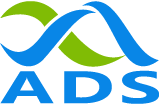Sanger Sequencing and NGS
Sanger sequencing as a gold standard for DNA sequencing is still commonly used in clinical settings. However, there is a trend that many clinical tests are using NGS to replace Sanger sequencing. The practice leverages the throughput, multiple gene mutation detection efficiency and sensitivity of the NGS test. However, there are concerns for replacing Sanger sequencing by NGS in general. First of all, unlike Sanger sequencing, a mature and standardized method with clear analysis guidelines, NGS lacks of standardization in methods and data analysis for many clinical applications. There are other challenges that NGS is facing to replace Sanger sequencing. In addition, even though NGS is more sensitive, the additional mutations found by NGS may not have clinical significance or benefit for treatment. Revealing of these mutations without a treatment solution could add unnecessary stress to the patients. For instance, for HIV drug resistance mutation detection, Sanger sequencing is still most commonly used, even there are NGS products are available.
Despite the traction that NGS have gained over the years, there are still situations where NGS can’t easily replace Sanger sequencing, especially for clinical setting. Here are some of the occasions that Sanger sequencing is still necessary.
Sanger sequencing for confirmation of NGS
Sanger sequencing as an orthogonal method is still widely used for confirmation of NGS results although some of the recent publications claim that Sanger sequencing confirmation of NGS is no longer necessary. Before NGS becomes the standard testing method that has proven its clinical accuracy and reliability, Sanger sequencing may still be used for confirmation of mutations in clinical settings for a period of time.
Sanger sequencing for detecting mutations in single and smaller genes
In mutant detection of single genes in clinical setting, Sanger sequencing is still cost-effective and less time consuming. These single genes are generally small and Sanger sequencing effectively and accurately detects variants from one or few PCR templates. One of the such genes is the beta-globin gene with three exons that are universally Sanger sequenced with only two sets of primers. The simple sequencing helps identify one of the 15 major pathogenic variants. A big gene may still be sequenced with Sanger sequencing due to lack of the NGS facility and expertise, although some advanced labs have already used NGS to replace Sanger sequencing for certain single gene mutation detection.
Sanger sequencing for difficult sequences
In human genome, difficult sequencing regions including the high-GC regions or dinucleotides repeat sequences often appear in the promoter regions (such as the promoter for EGFR). Some high GC-sequences also exist in structural genes such as the CEBPA gene encoding a transcription factor involved in myeloid differentiation. These genes are hard to be amplified or captured in the typical NGS methods and therefore are not easily covered and sequenced by NGS. In these situations, an individual Sanger sequencing assay is still necessary to identify the important clinical mutations.
Sanger sequencing for sequencing of genes with pseudogenes
Another challenge for NGS is to correctly sequence the genes with pseudogenes. There are more than 14,000 pseudogenes in the human genome. Although many genes have only one pseudogene, some house-keeping genes have multiple pseudogenes. These multiple pseudogenes with similar sequences, some with more than 90% sequence identity, become challenging for sequencing by NGS, especially for short-read NGS. Although amplification by PCR and capture by hybridization, the NGS enrichment methods, are finetuned to sequence the individual genes with pseudogenes, Sanger sequencing is often used to sequence PCR products that differentiate the real gene and the pseudogene. Improvement for sequencing of genes with pseudogenes has been made by long-read NGS, but it is still not cost-effective for clinical setting.
Sanger sequencing for filling the gaps in NGS
As we have discussed above, difficult sequencing regions and pseudogenes are hard to sequence by NGS, these sequence areas are often poorly covered by NGS. There could be other regions that are failed to be covered due to the NGS method design and implementation, these regions again need Sanger sequencing to cover to complete the WES (whole exome sequencing) or WGS (whole genome sequencing).
If you are doing clinical testing using Sanger sequencing, we welcome you to validate our whole portfolio of cost-effective Sanger sequencing reagents in your clinical labs. We can provide you with samples for clinical validation. In fact, we have some clinical labs who are using our SupreDye cycle sequencing kit for their daily testing.
